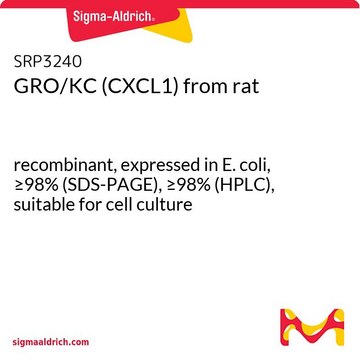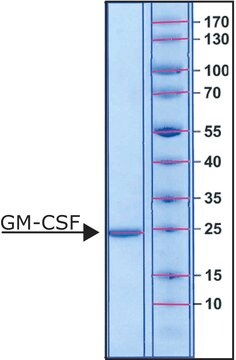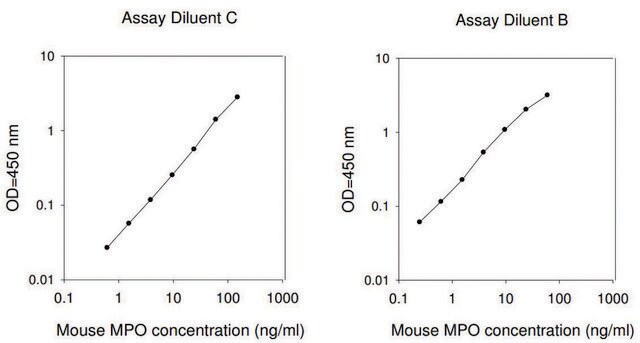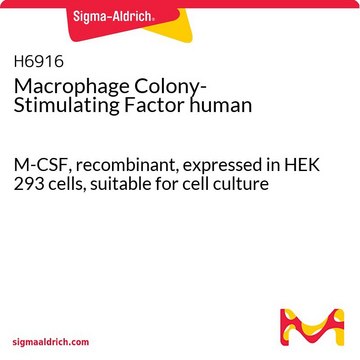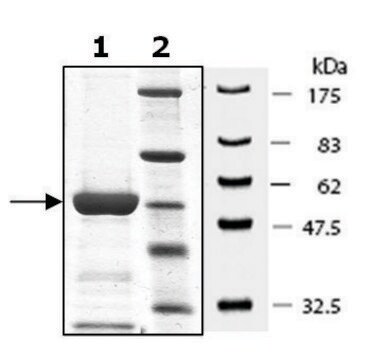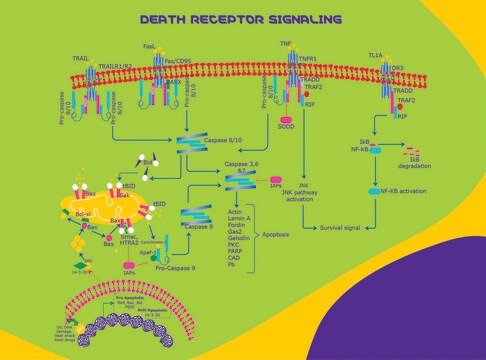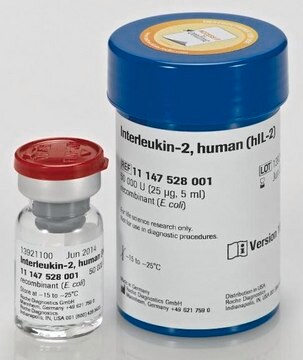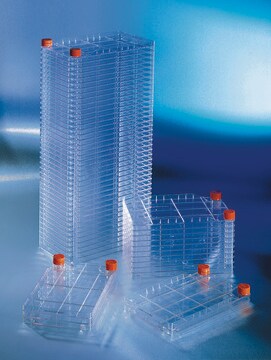SRP4210
GRO/KC from mouse
recombinant, expressed in E. coli, ≥98% (SDS-PAGE), ≥98% (HPLC)
Synonym(s):
CXCL1, GRO α, GRO1, Growth-regulated α protein, NAP-3
Sign Into View Organizational & Contract Pricing
All Photos(1)
About This Item
Recommended Products
biological source
mouse
recombinant
expressed in E. coli
Assay
≥98% (HPLC)
≥98% (SDS-PAGE)
form
lyophilized
potency
10-100 ng/mL
mol wt
~7.8 kDa
packaging
pkg of 20 μg
impurities
endotoxin, tested
NCBI accession no.
UniProt accession no.
shipped in
wet ice
storage temp.
−20°C
Gene Information
mouse ... Cxcl1(14825)
General description
Growth-regulated oncogenes (GRO)/keratinocyte chemoattractant (KC) belongs to the growing inflammatory protein superfamily. KC is characterized with four conserved cysteine residues with a CXC motif.
Mouse KC (also known as mouse GRO-α) belongs to the C-X-C family of chemokines. Mouse KC is a 7.8 kDa protein containing 72 amino acid residues.
Biochem/physiol Actions
Growth-regulated oncogenes (GRO)/keratinocyte chemoattractant (KC) plays a vital role in wound healing and inflammation. In rat, serum levels of GRO/KC can be used as a predictive biomarker for inhibitory effect of chemopreventive agents on esophageal carcinogenesis.
Physical form
Sterile filtered and then lyophilized without any additives.
Reconstitution
Centrifuge the vial prior to opening. Avoid freeze-thaw cycles.
Reconstitute in water to a concentration of 0.1-1 mg/mL. This solution can be diluted into other aqueous buffers.
Certificates of Analysis (COA)
Search for Certificates of Analysis (COA) by entering the products Lot/Batch Number. Lot and Batch Numbers can be found on a product’s label following the words ‘Lot’ or ‘Batch’.
Already Own This Product?
Find documentation for the products that you have recently purchased in the Document Library.
Multiple berry types prevent N-nitrosomethylbenzylamine-induced esophageal cancer in rats
Stoner GD, et al.
Pharmaceutical Research, 27(6), 1138-1145 (2010)
Cloning and sequencing of a new gro transcript from activated human monocytes: expression in leukocytes and wound tissue
Iida NAOKO and Grotendorst GR
Molecular Cell Biology, 10(10), 5596-5599 (1990)
Cloning and sequencing of a new gro transcript from activated human monocytes: expression in leukocytes and wound tissue.
Iida N A O K O, et al.
Molecular and Cellular Biochemistry, 10(10), 5596-5599 (1990)
Aimalie L Hardaway et al.
Clinical & experimental metastasis, 32(4), 353-368 (2015-03-25)
Increased bone marrow adiposity is a common feature of advanced age, obesity and associated metabolic pathologies. Augmented numbers of marrow adipocytes positively correlate with dysregulated bone remodeling, also a well-established complication of metastatic disease. We have shown previously that marrow
Yuan Sun et al.
The journal of pain : official journal of the American Pain Society, 15(8), 856-866 (2014-06-03)
Chronic opioid consumption increases postoperative pain. Epigenetic changes related to chronic opioid use and surgical incision may be partially responsible for this enhancement. The CXCL1/CXCR2 signaling pathway, implicated in several pain models, is known to be epigenetically regulated via histone
Our team of scientists has experience in all areas of research including Life Science, Material Science, Chemical Synthesis, Chromatography, Analytical and many others.
Contact Technical Service